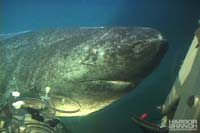Life Sciences and Chemistry
Articles and reports from the Life Sciences and chemistry area deal with applied and basic research into modern biology, chemistry and human medicine.
Valuable information can be found on a range of life sciences fields including bacteriology, biochemistry, bionics, bioinformatics, biophysics, biotechnology, genetics, geobotany, human biology, marine biology, microbiology, molecular biology, cellular biology, zoology, bioinorganic chemistry, microchemistry and environmental chemistry.

Ghost crab fossils haunt area beaches
Rare find on central Florida beaches
More than 500 remnants of prehistory – fossilized ghost crabs – have been found in the sand between Melbourne Beach and Satellite Beach. Although picked up for decades by beachcombers, these specimens were taken between 1992 and 2000. The find has been documented by Richard Turner, biological sciences, and published in the Journal of Crustacean Biology.
The Holocene and Pleistocene specimens, between 7,000 and 110,000 years-old, had been

’Timeless’ gene found to play key role as timekeeper in mammals
In 1998, scientists found the mammalian version of a gene, known as timeless, which in flies is crucial for the biological clock. However, all but one of the research groups involved determined that timeless did not have such a role in mammals. Now that research group says timeless is indeed a key timekeeper in mammals.
In a new complex molecular study of rats, published in the Oct. 17 issue of Science, researchers at the University of Illinois at Urbana-Champaign blocked the functional abi

Duke Researchers Discover Power Behind Molecular Motors
After having demonstrated how “molecular motors” move within cells, a team of researchers led by a Duke University Medical Center scientist now believe they have discovered the power stroke that drives these motors.
Molecular motors are proteins made up of amino acids like any other protein in a cell. Unlike other proteins, however, they move along cellular highways of tiny filaments, called microtubules, as they transport nutrients around the cell or herd chromosomes during cell division.

Researchers Create New Atlas of Yeast Proteins
Using high-tech robots and old-fashioned hard labor, Howard Hughes Medical Institute researchers have measured the abundance and pinpointed the cellular locations of more than 4,000 proteins in yeast.
Proteins are the workhorse molecules of the cell. They catalyze reactions, transport molecules within the cell and switch genes on and off. Measuring the abundance of and identifying the cellular locations of yeast proteins will be invaluable in helping to understand the complex biology of a re

Scientists determine identity, cell locale and quantity of nearly all proteins in an organism
First comprehensive view of protein activity in higher organism
UCSF scientists have developed a set of powerful tools that allow researchers to look in unprecedented detail at the full complement of thousands of proteins acting and interacting in a living organism. They have used the new tools to mine nearly the entire proteome of an organism – discovering what proteins are active in each cell, where they are active and in what quantity.
The results, published in two papers

Startling deep-sea encounter with rare, massive Greenland shark
During a recent submersible dive 3,000 feet down in the Gulf of Maine a HARBOR BRANCH scientist and sub pilot had the first face-to-face meeting ever in the deep sea with a rare Greenland shark. The docile 15-foot creature gently rammed into the submersible’s clear front sphere before turning and swimming slowly away. The entire encounter was captured on video, a clip of which can be viewed by clicking under the shark’s photo at: http://www.at-sea.org/missions/maineevent4/day14.html
HARBOR